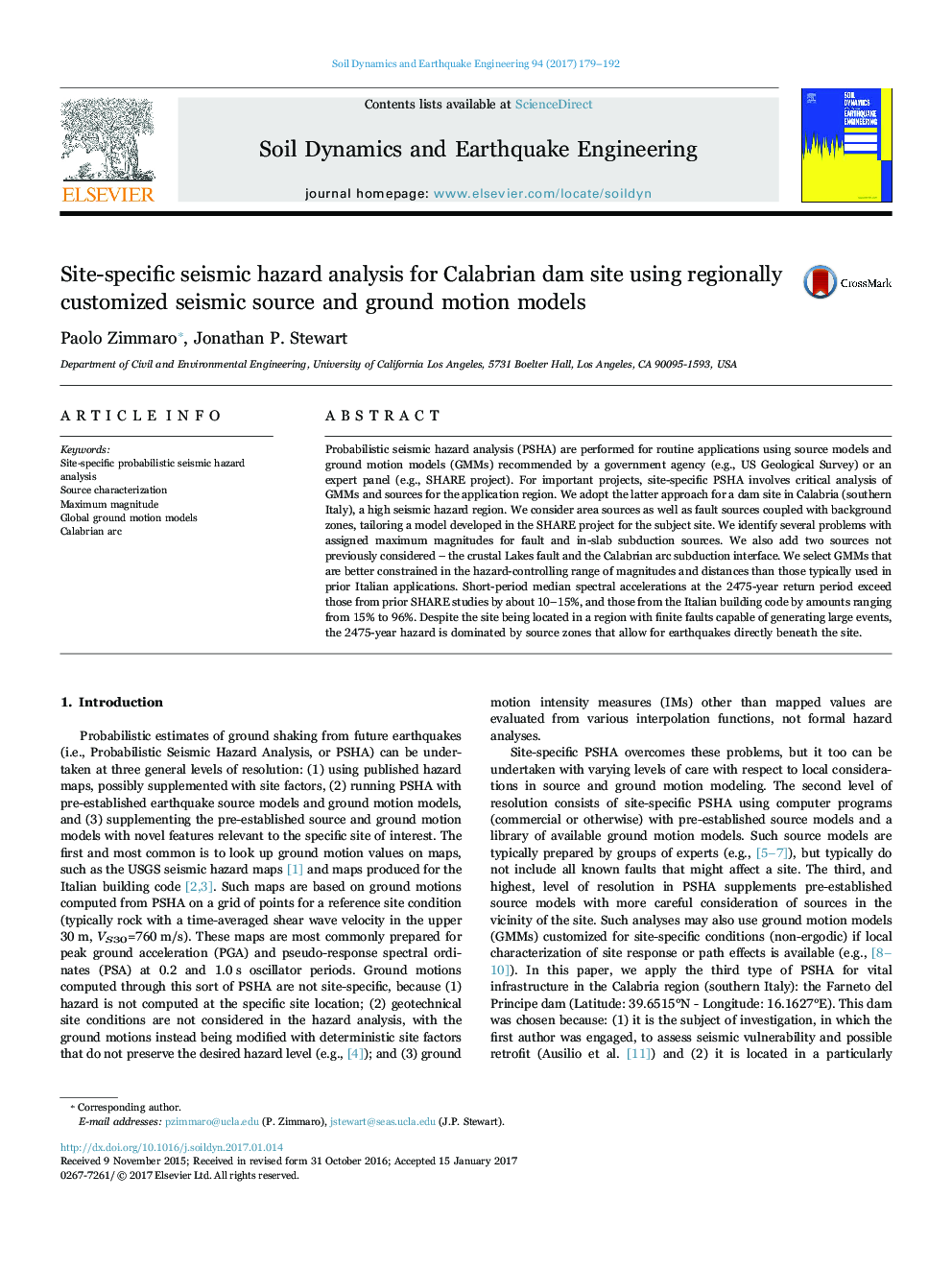| Article ID | Journal | Published Year | Pages | File Type |
|---|---|---|---|---|
| 4927292 | Soil Dynamics and Earthquake Engineering | 2017 | 14 Pages |
Abstract
Probabilistic seismic hazard analysis (PSHA) are performed for routine applications using source models and ground motion models (GMMs) recommended by a government agency (e.g., US Geological Survey) or an expert panel (e.g., SHARE project). For important projects, site-specific PSHA involves critical analysis of GMMs and sources for the application region. We adopt the latter approach for a dam site in Calabria (southern Italy), a high seismic hazard region. We consider area sources as well as fault sources coupled with background zones, tailoring a model developed in the SHARE project for the subject site. We identify several problems with assigned maximum magnitudes for fault and in-slab subduction sources. We also add two sources not previously considered - the crustal Lakes fault and the Calabrian arc subduction interface. We select GMMs that are better constrained in the hazard-controlling range of magnitudes and distances than those typically used in prior Italian applications. Short-period median spectral accelerations at the 2475-year return period exceed those from prior SHARE studies by about 10-15%, and those from the Italian building code by amounts ranging from 15% to 96%. Despite the site being located in a region with finite faults capable of generating large events, the 2475-year hazard is dominated by source zones that allow for earthquakes directly beneath the site.
Related Topics
Physical Sciences and Engineering
Earth and Planetary Sciences
Geotechnical Engineering and Engineering Geology
Authors
Paolo Zimmaro, Jonathan P. Stewart,
